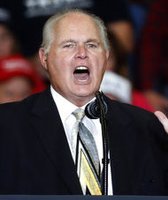Get PolitiFact in your inbox.
For the third time in his presidency, Barack Obama has named a Supreme Court nominee. His most recent pick: Merrick Garland, chief judge of the federal court of appeals for the D.C. circuit.
Garland’s path to the bench is certain to be bumpy. Almost immediately after iconic conservative Justice Antonin Scalia died in February, many Senate Republicans vowed not to meet with, hold hearings about, nor vote on Obama’s nominee, whoever he or she may be. The idea is that the delay could roll over to the next president, who they hope will be a Republican.
PITCH IN $1, HELP POLITIFACT GET $15,000 IN MATCHING FUNDS TO HIRE A FACT-CHECKER
Obama has said the Senate should hold a vote on his nominee as soon as it can.
"To suggest that someone as qualified and respected as Merrick Garland doesn't even deserve a hearing, let alone an up or down vote, to join an institution as important as our Supreme Court, when two-thirds of Americans believe otherwise, that would be unprecedented," Obama said in his March 16 announcement from the Rose Garden.
More than 60 percent of the public thinks the Senate should at least hold hearings on Obama’s nominee, according to a Washington Post-ABC poll released last week.
Here are some answers to a few questions about the upcoming Supreme Court appointment process.
Who is Merrick Garland?
Garland, 63, was appointed to the appeals court in 1997 and assumed the chief judge position in 2013. Three current Supreme Court justices formerly served on the D.C. circuit: Clarence Thomas, Ruth Bader Ginsburg and John Roberts.
Garland graduated magna cum laude from Harvard Law School and held judicial clerkships with Judge Henry Friendly of the Court of Appeals for the 2nd Circuit and Supreme Court Justice William Brennan, both appointed by President Dwight Eisenhower.
Garland has worked in the private sector as a partner at law firm Arnold & Porter, and in the public sector as a federal attorney. Notably, he orchestrated the federal investigation and prosecution of the 1995 Oklahoma City bombing as deputy assistant attorney general in the criminal division of the Justice Department.
Known as a moderate liberal with bipartisan appeal, Garland has been on the short list for a Supreme Court nomination throughout Obama’s term.
"Judge Garland's record demonstrates that he is essentially the model, neutral judge," SCOTUSblog publisher Tom Goldstein wrote in 2010. "He is acknowledged by all to be brilliant. His opinions avoid unnecessary, sweeping pronouncements."
Does Garland really have bipartisan appeal?
President Bill Clinton nominated Garland twice to the federal appeals court, first unsuccessfully in 1995 and then successfully in 1997. In both instances Republicans stalled the nomination. But it wasn’t because of his qualifications. Rather, it was because they just didn’t want to fill the vacancy, saying the court already had enough judges.
He was eventually confirmed by the Senate 76 to 23, and seven current Senate Republicans voted for his confirmation. Current Senate Majority Leader Mitch McConnell, R-Ky., opposed Garland’s nomination.
Numerous Republicans spoke favorably about Garland when he was up for confirmation in the 1990s, and conservative Chief Justice John Roberts has praised Garland’s judgement.
"Anytime Judge Garland disagrees, you know you’re in a difficult area," Roberts said.
Sen. Orrin Hatch, R-Utah, a member of the Judiciary Committee and a vocal proponent of blocking any Obama nominee, said the week before Obama’s announcement that he didn’t believe the president when he said he would select a moderate.
But Hatch added, "(Obama) could easily name Merrick Garland, who is a fine man. He probably won’t do that because this appointment is about the election."
On the other side of the aisle, some liberal groups have praised Garland’s nomination, like the League of Conservation Voters and the American Constitution Society. But progressive group Democracy for America expressed disappointment that Obama selected a white man rather than a woman of color.
Many Senate Republicans have not budged in the wake of Garland’s nomination, but some have said they will meet with him and hinted that if a Democrat wins the election in November, they might then consider Garland because they would prefer him to a more liberal nominee from the next president.
How does the confirmation process normally work?
The Constitution says the president is supposed to recommend someone to the Senate, which actually makes the appointment. Section 2 of Article II says the president "shall nominate, and by and with the Advice and Consent of the Senate, shall appoint . . . Judges of the supreme Court."
That's it. In practice, it's a little more complicated.
The president sends his choice to the Senate. The Senate leadership, by tradition, turns the nomination over to the Senate Judiciary Committee, which holds hearings that can stretch over many days, depending on the contentiousness of the choice.
Having the nominee appear before the committee is a relatively recent phenomenon. It happened first in 1925 when a group of liberal senators feared that Calvin Coolidge nominee Harlan Stone was a tool of big business. Stone agreed to reassure the committee and was overwhelmingly confirmed.
During the hearings, senators often try to discern how a candidate will vote on various issues important to them. The nominees, bound by the American Bar Association’s Code of Judicial Conduct that prevents them from making comments that would make it appear they have pre-judged matters that might come before the court, try to deflect those questions.
The Judiciary Committee then votes on whether to recommend the nominee to the full Senate, which can hold its own hearings.
Officially, a simple majority vote by the full Senate is enough to approve the nomination. In case of a tie, the vice president casts the deciding vote.
However, in recent years, the support of at least 60 senators has been required to hold a Senate vote, because that's how many it takes to shut down a filibuster. In 1968, a filibuster was used to kill Lyndon Johnson's nomination of Abe Fortas because of concerns over ethical issues; that nomination was subsequently withdrawn. That could happen here as well.
The Constitution does not dictate a time limit for the process.
What happens if the Senate doesn’t confirm a new justice?
Before Scalia’s passing, the court was pretty balanced. There were four liberal justices and five conservative justices, though one of them — Ronald Reagan’s appointee Anthony Kennedy — is considered a swing vote.
If Obama is able to get his nominee through, he will tip the balance of the court to the left by filling Scalia’s stalwart conservative seat with someone who — at the very least — leans liberal. So it makes sense that Republicans want to hold off, in case a Republican wins the White House.
However, if the seat stays vacant for an extended period of time, it’s possible that many decisions could result in a 4-4 deadlock, which would mean the decisions of the lower court would stand. Whether this would work in the Republicans' favor would depend on the case.
It’s very possible that numerous cases from the current Supreme Court term will result in 4-4 decisions, affirming the lower court’s decision, wrote SCOTUSblog’s Goldstein. In any case this year that hasn’t yet been publicly decided, Scalia’s votes are void.
Is it normal for the Senate to oppose the president’s candidate?
Opposition is not unusual, nor is rejection.
In recent history, most of the ill-fated nominations have been made by Republican presidents trying to get them through a Democratic-controlled Senate.
In 1970, Richard Nixon nominated G. Harrold Carswell, who was rejected 51 to 45 amid concern for his views on civil rights and women's issues.
In 1987, Ronald Reagan tried replacing Justice Lewis F. Powell Jr. with Judge Robert Bork amid strong Democratic opposition. Bork became the 12th nominee to be formally rejected by the Senate. The vote was 58 to 42, the largest margin in U.S. history for a Supreme Court nominee. No nominee has been rejected since.
Sometimes, the candidates end up withdrawing under scrutiny, which is what happened when it was revealed that Reagan's second choice, Douglas Ginsburg, had used drugs, both as a college student and later as a professor at Harvard. Ginsburg's name was never officially submitted to the Senate. Reagan's third choice, Anthony Kennedy, was confirmed without opposition. In all, it took 237 days to fill the gap, the longest in recent history.
How often does a nomination fail?
There have now been 161 nominations.
According to the United States Senate website, 117 appointees were confirmed and served, seven declined the appointment, 12 were rejected by the Senate, 12 withdrew, three were postponed and no action was taken in nine cases.
Since the 20th century, 59 have been confirmed and served, five were rejected, four candidates withdrew and no action was taken on one nominee.
The longest stretch of successful confirmations began in 1930 when Herbert Hoover nominated Owen Roberts to the court. The next 23 nominees were confirmed. Thurgood Marshall was the last in man in that streak; he was named by Lyndon Johnson in 1967. Seventeen of the 24 were approved on a voice voice.
There have been 24 nominations since Marshall's, not including Garland's. Seven — or 29 percent — have failed.
Is it too close to the election to be nominating?
According to Michael Gerhardt, a professor in constitutional law at the University of North Carolina at Chapel Hill, history shows that "not a single president has ever refused to make a nomination to fill a Supreme Court vacancy, regardless of its timing. No president has ever abdicated this authority, not even when they were lame ducks. In fact, six lame-duck presidents have made six Supreme Court appointments."
For example, John Adams, after being beaten badly by Thomas Jefferson, "nominated John Marshall as Chief Justice just a few weeks before Jefferson’s presidential inauguration. Though he despised Marshall, Jefferson never questioned Adams’s authority to make the appointment," said Gerhardt.
In all, 19 of our 44 presidents "have made Supreme Court appointments during or right after presidential elections," he said. That total is now 20.
Our Sources
New York Times, "Obama Chooses Merrick Garland for Supreme Court," March 16, 2016
New York Times, "How Bombing Case Helped Shape Career of a Potential Justice," April 27, 2010
New York TImes, "Partisan Gridlock Blocks Senate Confirmations of Federal Judges," Nov. 30, 1995
The New York Times, "Bork's Nomination Is Rejected 58-42; Reagan 'Saddened,'" Oct. 24, 1987
SCOTUSblog, "The Potential Nomination of Merrick Garland," April 26, 2010
NBC, "Antonin Scalia Dies at 79: Control of the Supreme Court Now at Stake in 2016," Feb. 14, 2016
Washington Post, "What happens when a Supreme Court justice passes away?" Feb. 13, 2016
Washington Post, "Republicans refuse to budge following Garland nomination to Supreme Court," March 16, 2016
Washington Post, "Live updates: President Obama nominates Merrick Garland to Supreme Court," March 16, 2016
CNN, "Republicans have repeatedly praised Merrick Garland," March 16, 2016
NBCNews.com, "A guide to the Supreme Court nomination," Nov. 5, 2005, accessed March 16, 2016
NPR, "Merrick Garland Has A Reputation Of Collegiality, Record Of Republican Support," March 16, 2016
U.S. Courts, Garland biography, accessed March 16, 2016
PolitiFact, "Sen. Richard Blumenthal correct that the longest Supreme Court vacancy in 30 years has been 237 days," Feb. 18, 2016
Senate.gov, "Supreme Court Nominations, present-1789," and "January 28, 1925 — Committee Grills Nominee," accessed March 16, 2016
ScotusBlog.com, "Getting the Senate’s responsibilities on Supreme Court nominations right," March 9, 2016, accessed March 16, 2016
Time, "Sen. Orrin Hatch: Senate Should Not Hold Hearings for Obama SCOTUS Nominee," March 15, 2016, accessed March 16, 2016
Huffington Post, "For a Normal Supreme Court Confirmation Process," March 10, 2016, accessed March 16, 2016

















































